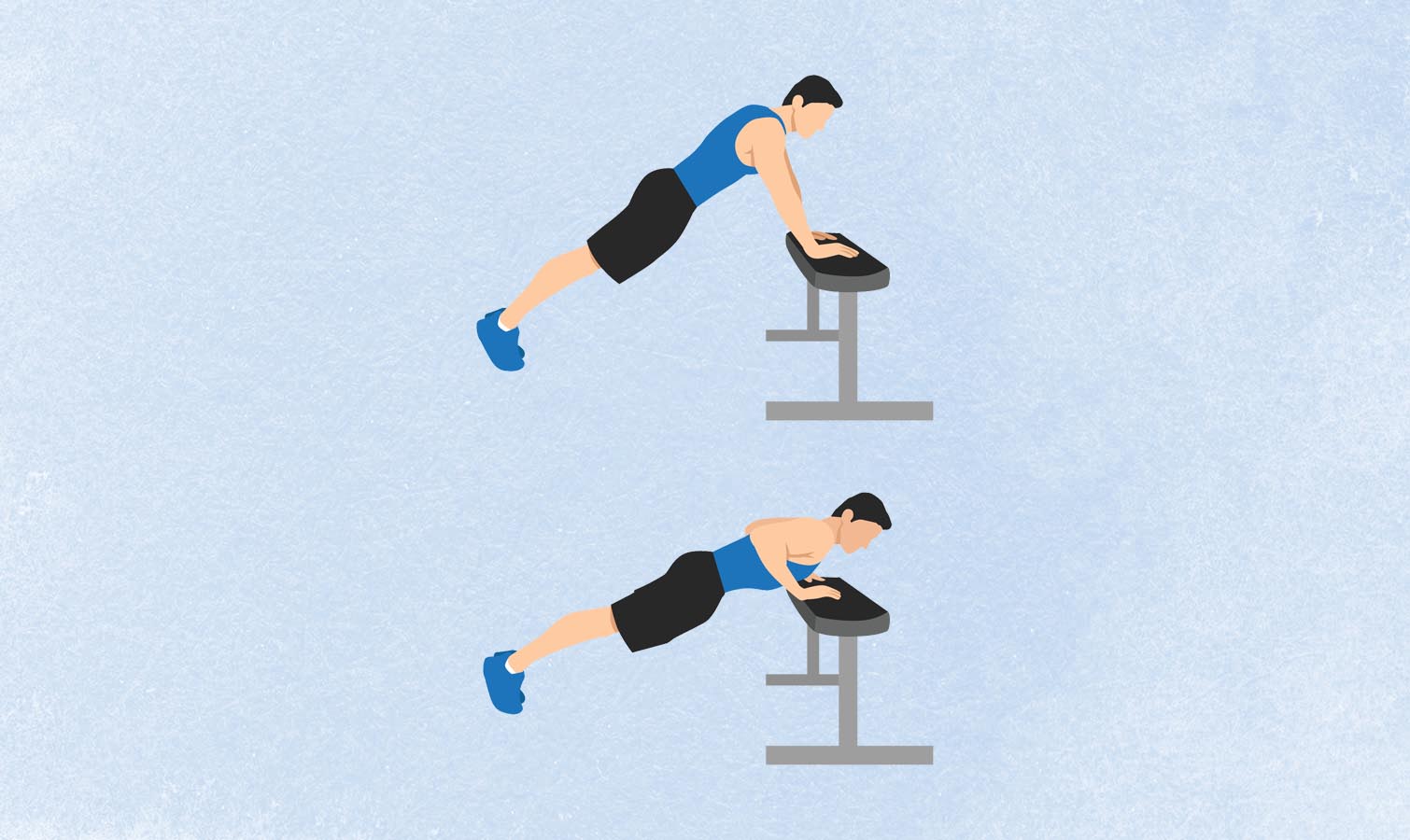
As I’ve noted before, the push-up is probably the most common body-weight strengthening exercise of them all. It’s also highly adaptable, and I’ve tried a few variations for Tom’s Guide, including the dumbbell push-up, pike push-up and the diamond push-up. And I wasn’t unfamiliar with the incline version, but I was keen to see how I’d fare by doing 50, or more, every day for a week.
What is an incline push-up?
The standard push-up, the one used to punish smart-mouth rookies in Army movies, works the chest, arms, and shoulders, and gives the core something to do, as well. The incline version is performed with your hands on a gym exercise box, or you can use a sturdy bench at home. Basically, any elevated surface will do, provided it’s not too high or low. And if it has castors, forget it. You could even do it using a stability ball, though that’s asking a lot.
The main reason to do the move is that it takes some pressure off your wrists and arms. This makes it easier to complete than the standard version, and it also gives your chest a tougher workout. If you’re new to push-ups (and someone always is, somewhere), this is a good place to start.
How do I do an incline push-up?

- Stand in front of a box or bench and place your hands on it, about shoulder-width apart, with fingers forward.
- Step back and get into plank position, arms high and straight. Your body should be forming a line from head to toe. Engage your core and look ahead, not down, to help maintain your position (no arching of the body, please). Your feet should not be so far from the box that you will be pushing against it when you lower, or so close that your chest will to be too high when you do the move.
- Now, lower your chest toward the bench by slowly bending your arms, keeping them close to your body. Your chest doesn’t have to touch the surface, but at the bottom of the move your upper arms should be in line with your back, and your wrists in line with your elbows. Keep that straight body line throughout.
- Straighten your arms to return to start position. Aim for three sets of 10 reps and see how you feel.
I did incline push-ups every day for a week — here’s what I learned
I knew I could do this move — which is not always the case with these challenges on day one — so, for me, the week was about doing more. And then doing a little more. And then asking just one more time.
Familiarity breeds intent
I’m going to get this out of the way up front: I love this exercise, and the more often I did it, the more I got from it and the more I enjoyed it. In part, it’s because this version is easier than the usual push-up, and yes, I know that when an exercise variant is less demanding, alarm bells should at least be considering going off somewhere (“Should we start ringing, guys? I mean, is it time? It’s hard to know. One bell?”).
In my case, the main reason it’s less arduous is that I have pins in my wrist, which means the standard push-up can be a little sore after a while. This version puts much less pressure on my hands, so I can do more, which is a huge incentive to do even more. And it’s a first-class body-weight chest exercise.
Room for improvement
On day one, I decided to see how many push-ups I could do non-stop with relative ease. I hit 40, which I thought was decent enough for the second day of January. (I did very little exercise over the holidays. Fine, you got me: I did none.) I felt it immediately along the sides of my chest and in my upper arms. This was my baseline. One thing to note: if you do this at home, make sure your shoes have a decent tread or you use a workout mat unless you fancy sliding back and ending up on the floor.
On the two following days, I did three sets of 20 reps, noting the feeling in my upper chest more than anywhere else. The closer you can bring your chest to the bench or box, the better.
On the fourth day, I completed three sets of 25. I was tired toward the end and noticed my head dropping rather than my chest lowering closer to the bench. But I wasn’t fooling myself, not this time. I reset my body position and completed the final few with determination, it precious little grace.
On day six, I decided to see how far my baseline had shifted: I completed 55 without a stop, though I confess that returning to the start position for the final few felt like I was raising the Titanic. If my arms had rivets, they’d have been shooting across the room.
On the final day, I did one set of 50, one of 30, and one of 20. A huge improvement in seven days, but my opening effort may have been somewhat compromised by a period of inactivity in the preceding week or so. Also, I try always to remember that the body behaves and responds differently from one day to the next. If you try these challenges, don’t give yourself a hard time if they don’t always go to plan.
I did incline push-ups every day for a week — here’s my verdict
Just go for it. It’s an ideal at-home move for those new to push-ups or if you want to take some pressure off your arms and shoulders while you focus on your chest. I’ve continued to do the exercise each day since the challenge ended and I’m still enjoying it. I don’t expect that to change. The incline push-up is a move you can do almost anywhere (a park bench, a stair, a low wall) and you don’t even have to be wearing your workout kit. I’m not saying you should excuse yourself and do them at social gatherings, but you could. At a push.







